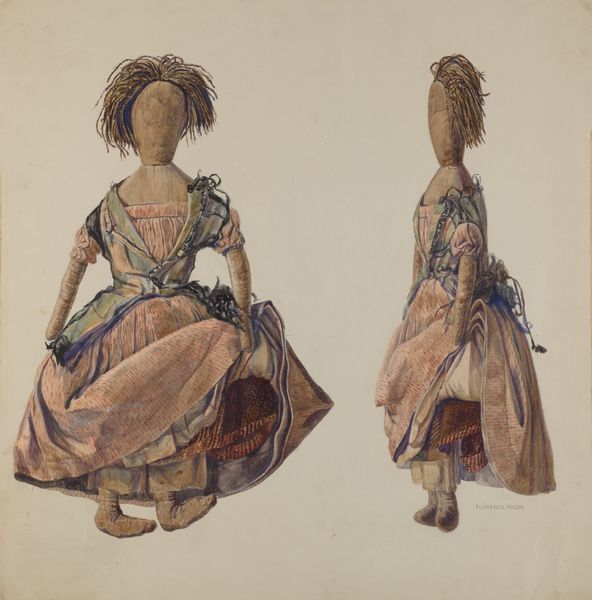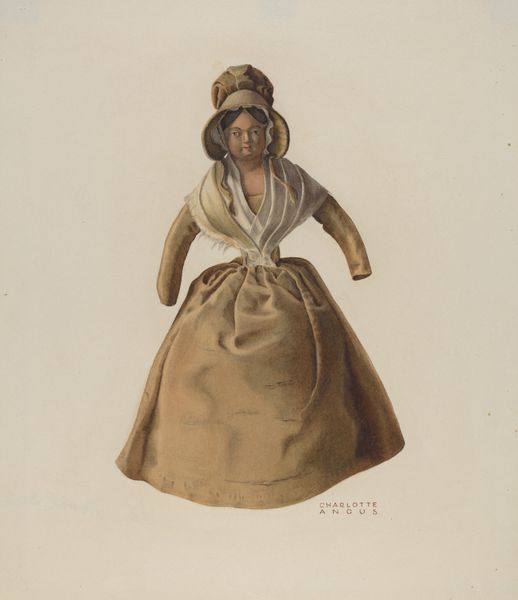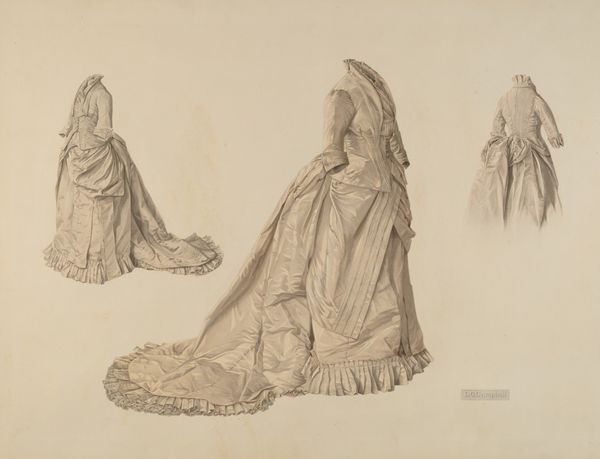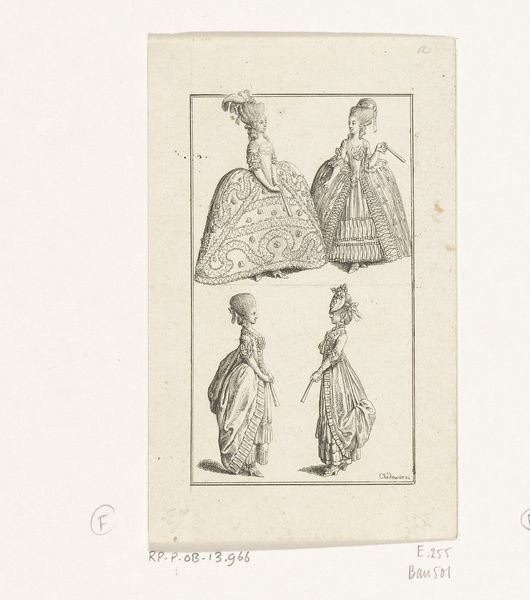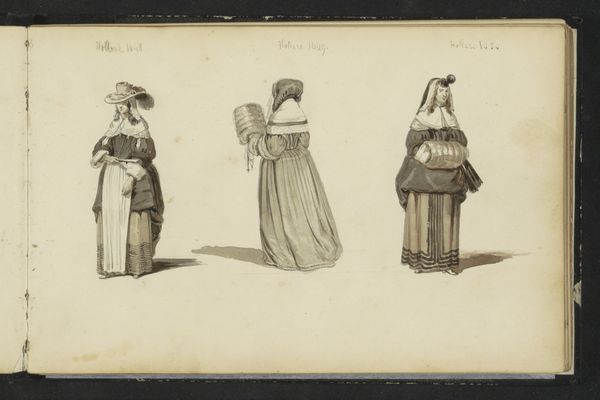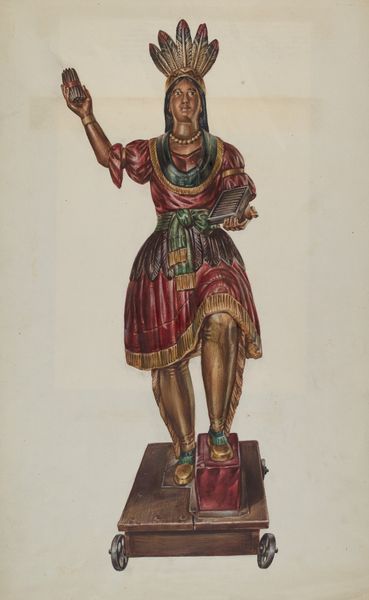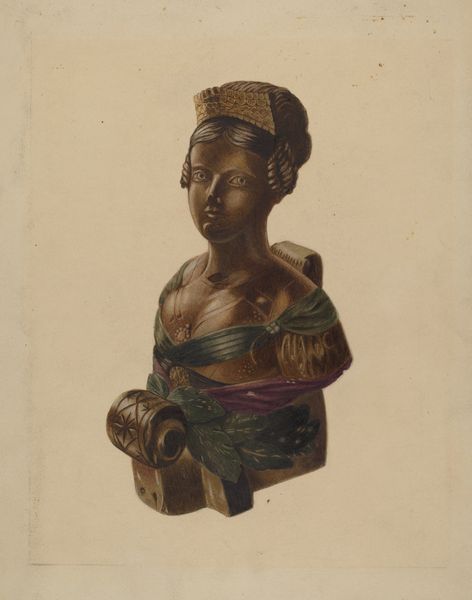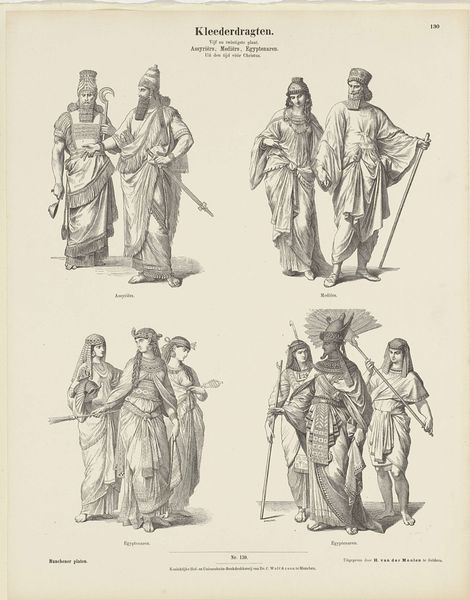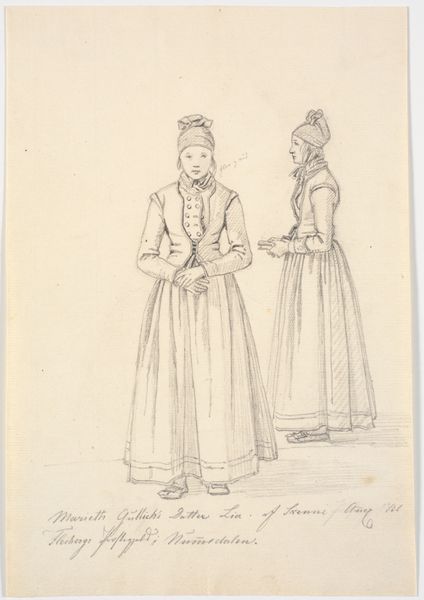
drawing, coloured-pencil, watercolor
#
drawing
#
coloured-pencil
#
figuration
#
watercolor
#
coloured pencil
#
academic-art
#
miniature
#
watercolor
Dimensions: overall: 38.3 x 55.5 cm (15 1/16 x 21 7/8 in.)
Copyright: National Gallery of Art: CC0 1.0
Curator: Editor: Frances Lichten's "Doll," created around 1936 using watercolor and colored pencil, is really intriguing. Seeing the doll from three different angles gives it a somewhat unsettling dimensionality, almost like she’s trying to escape the page. What strikes you about this piece? Curator: I’m immediately drawn to Lichten’s choice of depicting a doll. It speaks volumes about the era, doesn’t it? Dolls were often seen as tools for social conditioning, preparing young girls for their expected roles. But Lichten's doll, captured from multiple angles, challenges that traditional view, wouldn't you agree? How does her artistry speak to or critique those societal expectations? Editor: I see what you mean. I hadn't considered that the doll itself could be a commentary. The multiple viewpoints do give it a sense of objectification, almost as if Lichten is putting the doll - and, by extension, the societal expectations it represents - under scrutiny. Does the doll’s almost unfinished appearance reinforce this in any way, like it is not ready, but rather in the process of becoming? Curator: Precisely. Its unfinished quality might suggest that societal roles aren't fixed or fully formed but are always under construction, open to interpretation and change. Consider the public's perception and reaction at that time – the artwork subtly invites questions about pre-defined identities, specifically for women. This subtle critique highlights Lichten's understanding of art as an active participant in social discourse. What do you make of this technique? Editor: I suppose that by drawing our attention to how the doll is being constructed, Lichten is challenging us to reflect on how societal roles and gender expectations are constructed too. It definitely pushes back against a passive acceptance of tradition. I appreciate how she’s used seemingly simple imagery to convey deeper socio-historical points. Curator: Agreed. The painting prompts a critical understanding of the social dynamics present during its creation and invites a continued analysis of such ideas today. It demonstrates the continuing power of art as a force for social awareness.
Comments
No comments
Be the first to comment and join the conversation on the ultimate creative platform.
